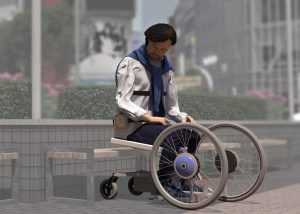SSA Proposes Changes to Continuing Disability Review Policy
By PVA National Staff
The Social Security Administration (SSA) has issued a notice of proposed rule making (NPRM) that would revise its regulations regarding when and how often it conducts continuing disability reviews (CDR). The proposed rule would add a category to the existing medical diary categories used to schedule CDRs, revise the criteria for assigning each of the medical diary categories to cases, and change the frequency with which CDRs are performed for claims within the medical diary category for permanent impairments.
SSA would add a Medical Improvement Likely (MIL) review category for nonpermanent impairments that are likely to improve, based on what SSA claims is its experience with CDR outcomes. As identified by the agency these include impairments such as cancers that are found to be disabling under the Listing of Impairments for a specified period, certain mental and musculoskeletal impairments, and allowances based on medical and vocational factors at step 5 of the sequential evaluation process. The timeframe for review would be every two years.
Most PVA members, if they are on Social Security Disability Insurance (SSDI), fall into the Medical Improvement Not Expected (MINE) review category. The primary change for MINE would be to reduce the time frame for review from its current standard of every five to seven years to every six years. Although spinal cord injuries are on SSA’s list of impairments that automatically qualify someone for SSDI, SSA cites seventeen other impairments that currently receive a MINE diary based on the interaction of the impairment with the claimant’s age and functional limitations. Among the impairments are Amyotrophic Lateral Sclerosis (ALS), Multiple Sclerosis, “other diseases of the spinal cord,” and “parkinsonian syndrome.” It is unclear from the NPRM what the age threshold is leading to concerns that, if SSA sets the age threshold at a high level, younger people with these conditions could be subject to more frequent CDRs.
Disability advocates have a number of concerns with the NPRM from its impact on persons with impairments that would fall into the new MIL CDR category to SSA’s underestimation of the paperwork and administrative burden placed on beneficiaries undergoing a CDR. The NPRM suggests that it should only take a person 60 minutes to complete the 15 page CDR form but the beneficiary is asked to provide medical records, answer short essay questions, provide info about their medications, list tests they have received and any assistive technology they use, describe any hobbies they pursue, and their activities of daily living. Because most beneficiaries attempt to respond to a CDR without any representation, the increased frequency of reviews could lead some to lose their benefits if they fail to respond properly to all that is requested. Comments are due by January 31, 2020.
The NPRM and supporting documentation can be found here.



